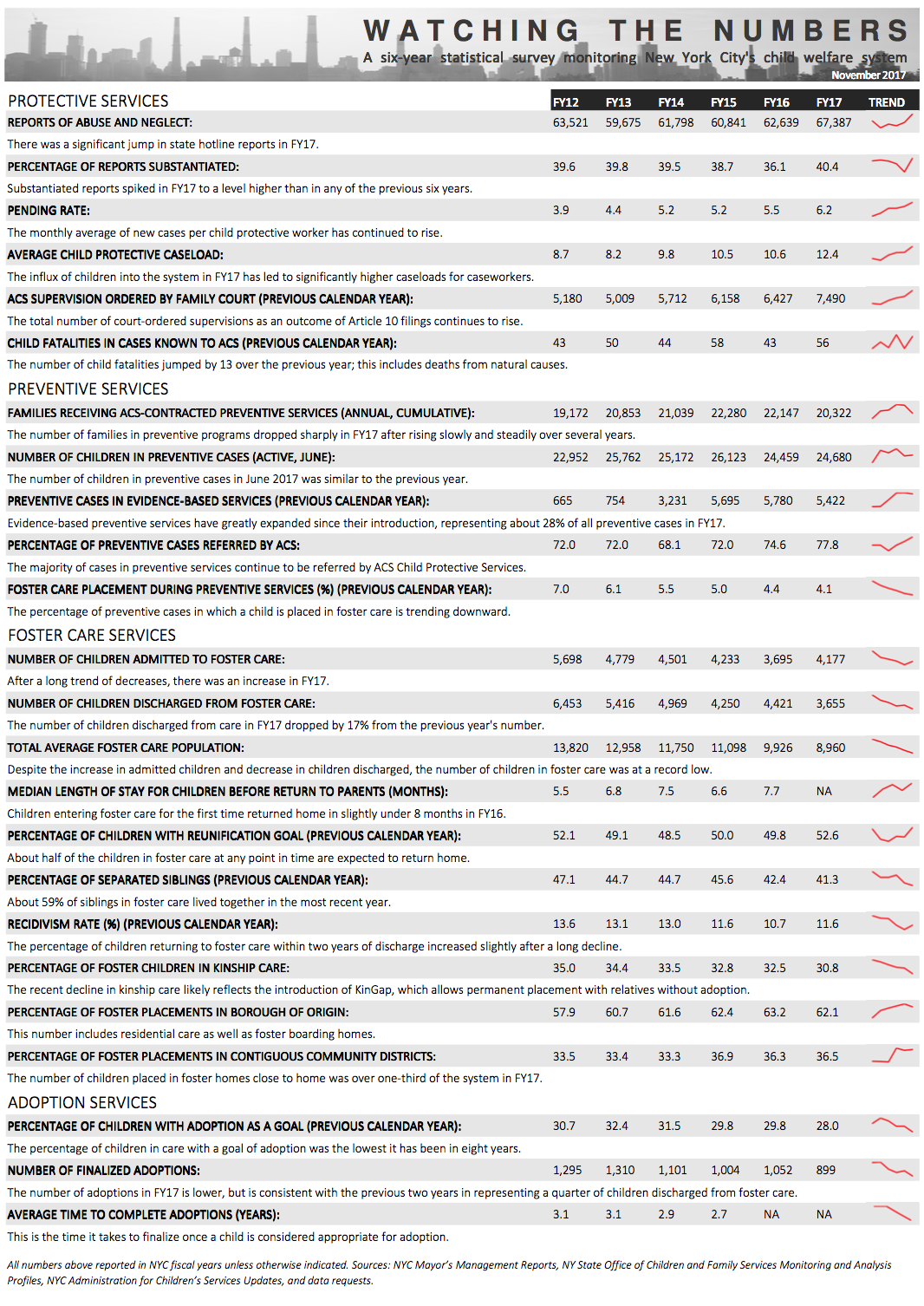CNYCA's six-year statistical survey monitoring New York City's child welfare system
November 2017
Our six years of key indicators spotlight trends in New York City’s child welfare system.
While the total number of children in foster care continued its long downward trend in Fiscal Year 2017, the system saw a surge of child protective activity overseen by the Administration for Children’s Services (ACS) near the end of 2016 and in early 2017. At the same time, there was a significant slowdown in the preventive service system, an increase in caseloads among child protective workers, and a large growth in the number of families brought to Family Court. These changes began in October 2016, shortly after the widely publicized killing of Zymere Perkins, a 6-year-old who was beaten to death less than two months after his preventive service case was closed (see ACS in Overdrive). This death is an important factor in understanding the 2017 data.
There was a significant increase in reports of suspected child abuse and neglect; the total number of reports for FY17 was 67,387, 7.6% higher than the previous year. In addition, 40.4% of these reports were substantiated, a percentage higher than in any of the previous six years.
The number of foster care placements jumped. After a record low of just under 3,700 in FY16, the number of children admitted to care grew to nearly 4,200 in FY17.
Nevertheless, the average monthly foster care census continued its long downward trend, decreasing to 8,960 in FY17.
The increase in new foster care placements contributed to significant growth in caseloads among child protective workers. The average caseload in FY17 was 12.4, up from 10.6 the previous year. During at least one month of 2017, the average caseload reached 14.
The number of families receiving ACS-contracted preventive services dropped sharply, from 22,147 in FY16 to 20,322 in FY17, in part because of a slowdown in the closings and openings of new preventive service cases after the death of Zymere Perkins.
Foster care placements during preventive services, one of few outcome measures available for assessing preventive programs, has shrunk over the past six years. In 2011, 7% of preventive cases led to foster care placement, versus 4.1% in 2016.
In recent years, ACS has adopted several evidence-based preventive service programs, which rely on models demonstrated to be effective in clinical trials. After increasing rapidly between 2012 and 2014, evidence-based preventive services now represent more than a quarter of all preventive services.


